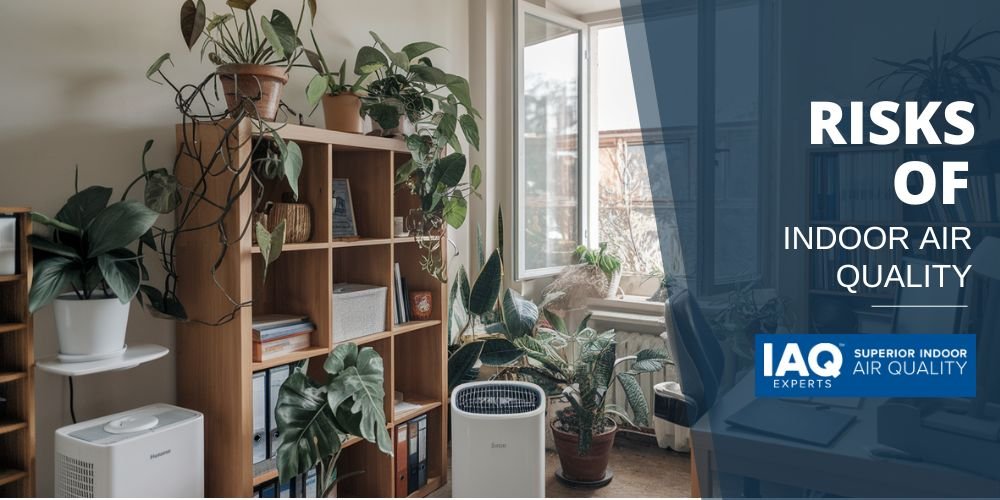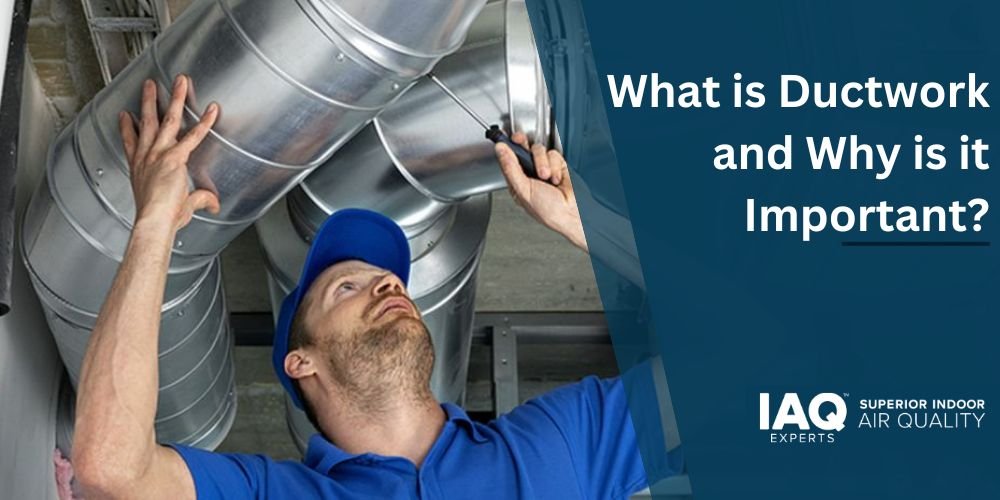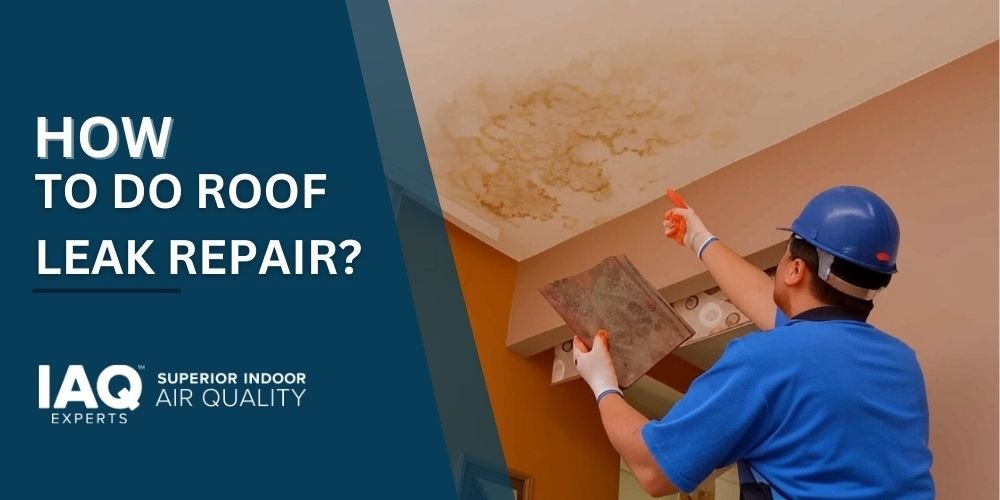Introduction
Indoor air quality is one of the most essential features in our living environments. Surprisingly, the air inside our residences can be much more polluted than outside air, owing to various health problems, including property damage. Pollutants like mold spores might compromise indoor air and other volatile organic compounds.
All these risks are significant in order to have a healthy home free of diseases. In this blog, we look into the common pollutants that degrade Indoor air pollution, associated health risks, how poor air quality impacts your home, and practical steps to improve the air you breathe. By the end, you will appreciate why monitoring and enhancing indoor air quality is essential.
Common Pollutants that Compromise Indoor Air Quality
- VOCs: Chemicals released as gases from paints, varnishes, cleaning supplies, and pesticides. Eye, nose, and throat irritation, headaches, and nausea caused by VOCs may cause liver and kidney damage with long-term exposure.
- Mold and Mildew: The fungi that grow in damp conditions and release spores into the air have the potential to create allergic reactions, attacks of asthma, and respiratory diseases upon inhalation. The growth of mold spoils material and results in costly repair apart from health concerns.
- Particulate Matter includes dust, pollen, pet dander, and smoke products. Tiny particles penetrate the lungs deeply, leading to respiratory problems, worsening asthma, and heart disease. They are common in homes with poor ventilation.
- Carbon Monoxide (CO): Colorless, odorless gas generated by burning fuel from stoves, fireplaces, and furnaces. Extremely high levels are lethal and can cause headaches, dizziness, weakness, confusion, and even unconsciousness. Proper ventilation and maintenance of appliances are a must.
Effects of Poor Indoor Air Quality

- Respiratory Problems: Poor indoor air quality may lead to various respiratory problems, including cough, sneezing, bronchitis, and asthma. The pollutants inflame the airways and make breathing tricky, primarily for people suffering from these conditions.
- Allergic Reactions: Hence, allergens, such as mold spores, dust mites, and pet dander, are responsible for allergic reaction development. In grievous cases, symptoms include itchy eyes, running noses, skin rashes, and potentially anaphylaxis.
- Cardiovascular Problems: Every fine particle can pass on to the bloodstream and cause heart diseases, high blood pressure, and stroke. With long-term exposure, cardiovascular events more often occur, posing serious health threats, especially among the elderly population.
- Cognitive Effects: Carbon monoxide, VOC, and other air pollutants can affect mental performance and trigger headaches, dizziness, fatigue, and difficulty concentrating. High levels of specific contaminants can amply result in disorientation or even loss of consciousness under extreme conditions.
- Structural Damage: Mold and mildew weaken structures like drywall and wood. Over time, moisture and fungal growth can cause rot, compromising walls, ceilings, and floors—leading to expensive restoration.
- Loss in Property Value: Homes with visible mold, lingering odours, or poor air reports tend to lose value. Potential buyers are likely to avoid such properties, affecting resale opportunities.
- Damaged Furnishings: Smoke, soot, and excess moisture can stain walls, warp furniture, and ruin wooden flooring, decreasing the appeal and lifespan of household items.
- Increased Energy Costs: Poor indoor air is often linked to ineffective HVAC systems. These systems strain to maintain temperature and airflow, consuming more energy and raising utility bills.
- Reduced Productivity and Sleep Disturbance: Poor air quality doesn’t just affect health—it impacts how well you function and rest. Pollutants like VOCs and excess carbon dioxide can impair focus, memory, and overall productivity. Additionally, allergens and poor airflow can cause sleep disturbances, leaving you tired and less effective throughout the day.
Effects on Home and Property
- Structural Damage: Mold and mildew growth can weaken structural components such as wood and drywall. When left for an extended period with moisture and fungal growth, it will cause rotting, thereby compromising the integrity of walls, ceilings, and floors and requiring expensive repairs.
- Loss in Property Value: Houses with indoor air quality issues usually have less market value. If mold is visible, occasional odors persist, or if they are so obvious, then potential buyers turn their backs on these properties, which makes them even more challenging to sell and less valuable.
- Damaged Furnishings: Smoke and soot represent contaminants that can discolor walls, ceilings, and furniture. Excess humidity can warp wooden furniture and destroy wooden floors.
- Increased Energy Costs: Poor indoor air quality is usually caused by inadequate ventilation and HVAC systems. More efficient systems need help to regulate the temperature and flow of air through the facilities, leading to increased energy consumption and higher utility bills over time.
How to Improve Indoor Air Quality
Improving indoor air quality is crucial for maintaining a healthy and comfortable environment, whether at home or work. By taking a few proactive steps, you can significantly enhance the air you breathe and create a safer, healthier space for everyone.
- Regular ventilation: Open some windows or switch on the exhaust fan. Good ventilation will lower the indoor pollutant concentration and remove all the stale air while replacing it with comparatively cleaner outdoor air, thus improving the air quality.
- Use of Air Purifiers: Install good-quality air purifiers equipped with HEPA filters to remove particulates, allergens, and some VOCs. Regular replacement of filters in HVAC systems ensures efficiency and provides an opportunity for the best air purification.
- Control Humidity Levels: Indoor humidity is best maintained between 30% and 50% using a dehumidifier or air conditioner, whichever is applicable. Proper humidity control inhibits mold and mildew growth.
- Regular Cleaning: Regular cleaning, including vacuuming carpets, dusting surfaces, and washing bedding. Natural, non-toxic cleaning products minimize VOC emissions and reduce the accumulation of dust, pet dander, and other allergens.
Conclusion
Indoor air quality monitoring and improvement are essential in protecting your health and property from damage. By dealing with common indoor air quality pollutants and taking practical solutions, you can have a healthier place to live and avoid future costly damages. Bad air quality shouldn’t scale down your well-being or devalue your home.
Be sure to seek professional help to assess and then enhance your indoor air quality. Contact IAQ Experts today for assistance. Let their experienced specialists give you comprehensive and customized solutions to your particular needs, thus assuring the best air quality.




